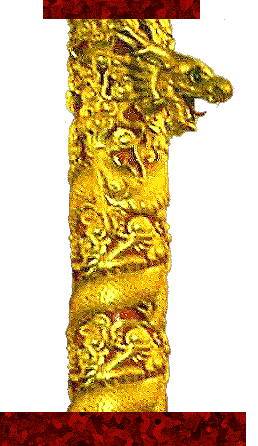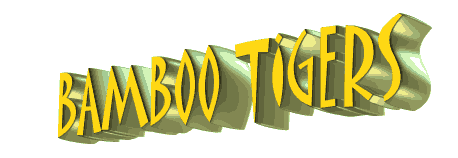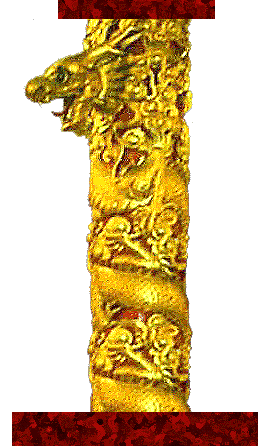| |
Everybody on both sides raced cars out at Great Highway just for the fun of it. The broad stretch of highway--edged on the west by the Pacific Ocean and on the east by the Ricmond District, Golden Gate Park and the Sunset District--had been a fun center from the time Playland-at-the-Beach echoed with calliope music, when the merry-go-round made its first turn in 1916, to the day the Big Dipper roller coaster made its last run in 1972. The spacious boulevard was called "great" because, in its time, and even today, it was and is just that. It begins south of Cliff House, a name applied to a succession of restaurants which have occupied space on a projection of rock below the cliffs of Sutro Heights since 1863. Earlier generations would have recoiled in horror to learn that the future would bring carloads of young Chinese gangsters taking pot shots at each other across the roadway marking the westernmost boundary of The City.
Dana was once shot in the arm by a W.C. When he and Tom went riding with the other boys at Great Highway, they had a habit of passing the guns to someone else to do the shooting, to people like Stuart Tam and Robert Lui. For Tom, that gesture held true in other matters, as well.
Gan Wah Woo reported that in the early part of 1977 Tom gave him orders to kill Kenneth Kin Louie. He supposedly told Gan Wah where the Hop Sing Boy lived and advised him to wait till Kenneth came out in the morning to warm up his car, and then to shoot him. Tom gave him a .38-caliber handgun. Gan Wah said he didn't want to do it, but he felt he couldn't refuse Tom. Tom drove him to the vicinity of Kenneth's house in North Beach, sent Gan Wah off to do the deed, and waited out of sight. But the W.C. came out with friends. Tom's response to that news, according to Gan Wah, was, "Wait for a second time."
The second time, Kenneth came out alone, but Gan Wah couldn't bring himself to shoot because he had nothing personal against the other guy. He went back and lied to Tom in telling him that a girl had come out to drive the car. Why did he tell that lie? "I was afraid of Tom," recalled Gan Wah, "I was scared." Tom sent him back for a third try, at 3 in the afternoon, but that time Kenneth didn't come outside, and Gan Wah was frightened off by a lady who saw him and could have identified him. He swore he never tried it again.
Be that as it may, Kenneth Kin Louie was shot to death in his car at 2:30 on the afternoon of May 31, 1977. That is a certainty, as is the fact that Gan Wah didn't kill him. The swimming dragon was at that moment in custody at the Youth Guidance Center on another charge.
On May 11th, almost three weeks before, a cashier stood behind the counter at the Golden Palace Restaurant on Irving Street in the Sunset District. Two Chinese boys walked in and strode up to face the 38-year-old Chinese lady. One, pointing a revolver at her, announced in Cantonese, "This is a holdup." The second boy walked behind the counter and, also in Cantonese, ordered her to open the cash register. He removed $100 ($90 in currency and a roll of quarters). The boys then fled the premises and escaped in a waiting car parked on 20th Avenue. The vehicle was remarkable to witnesses not only for its drab green color, but also for the fact that it had no rear window.
In another part of the city, Larry Ryan happened to monitor the police broadcast that went out to alert all units to the search for this car. He immediately reported that on April 25th, at 6 in the evening, he and his partner, Rich Moses, had stopped such an auto at 10th Avenue in the Geary Corridor.
At the wheel of the 1967 Mercury had been Peter Cheung.
The very next day after the Golden Palace Robbery, Simmons and Paul Morse were driving over to Central Station in Chinatown to check on an arrest warrant, when they passed a drab green, 1967 Mercury Cougar with no rear window, traveling south on Mason. It turned into the parking lot at Harbor Emergency Hospital. The cops, recognizing the passengers, circled around, and drove into the same garage area.
Six people had emerged from the parked car: Dana, Gan Wah, Melvin, Chester, Yee Yuen Wong and Lloyd Lee. They were clustered around its raised hood, and around that of a vehicle sitting beside it. They appeared to be working on both. The second auto, which they had obviously parked there previously, had been recently involved in two armed robberies.
The boys gave the cops the hard eye when Simmons and Morse stepped out of their unmarked car.
"Here we are with no radio," Simmons commented wryly to his partner, "so we can't call for help. We've got seven or eight real assholes over there, every damned one of 'em a fuckin' killer. Are we going to handle this diplomatically, or give 'em hell?"
Morse felt for the pistol at his waist. "Give 'em hell," he said, reassured, and, then, to the boys, "Get your hands up on top of the car!"
Dana protested in obscenities. He could as easily have whipped out a gun.
"You heard what the man said!" yelled Simmons. "Get your goddamned hands on top of the car!"
While the boys complied unwillingly, Morse told Simmons out of the side of his mouth to "go get help." Simmons ran into the hospital and found a medical steward who called Central Station for assistance. In two minutes, there were black-and-white units all over the place. By the time the kids were in custody, Morse had found a .25 automatic on the garage floor behind the robbery car, and Simmons came up with a .38 wedged between the bucket seats of Dana's.
They took the boys to Central Station. Morse, thinking Dana to be still a juvenile (he had actually turned 18 on February 4th), asked the Yu twin to step into the lineup area to fill out the necessary papers. "Take a seat in that chair," the detective instructed. Defiant, Dana walked away, muttering obscenities.
Morse placed a hand on the boy's arm in gentle restraint. Dana pulled away and struck the offending hand. Less gently, Morse tried again, but Dana, a graduate of Bosco Yeung's kung-fu classes, tried to do his master proud with a fancy kick to the officer's groin. Morse blocked the kick with some elegant maneuvering of his own and, with Simmons' help, subdued the kid and handcuffed him. Then, to the cops' delight, Dana was revealed as an adult. They had the pleasure of booking him right there at Central Station.
A check on Yee Yuen Wong uncovered outstanding traffic warrants. At 24, he, too, was eligible for booking at Central.
That left Lloyd, Dana's kid brother Chester, Melvin and Gan Wah. Lloyd and Chester, being "clean" in all respects, were released. Melvin and Gan Wah, the buddies, both true juveniles at 17, were transported to the Youth Guidance Center because of weapons possession and their involvement with a vehicle wanted in a robbery.
Morse went out to the Golden Garden Restaurant the next day, Friday, May 13th, and showed some mug shots to the lady cashier. She picked out Gan Wah right away as the boy who had held a gun on her two days before. Then she lingered over Melvin's photograph, but passed him by. She was required to attend Gan Wah's hearing at the Y.G.C., which took place after the murder of Kenneth Kin Louie, meaning that he was safely in custody during that homicide.
When asked to identify Gan Wah in the flesh, she took another look. The swimming dragon met her gaze at his "dead-bang I.D." gold teeth with his searing version of the hard-eye stare. The lady paled and turned away. "I don't remember," she said. "No, I can't remember a thing."
The next incident, of greater magnitude in helping to shape future events, was the Joe Boys' invasion of Chinatown on the 4th of July 1977. Melvin and Jeung Him Tom were shot, as was rival Dean Tom. Melvin was with Felix Huey when the younger boy got killed; thus, he knew, or thought he knew, who did it. The same boy shot him. Who was it? Melvin later identified the culprit to Peter Cheung as "the guy with curly hair."
At the hospital after the shooting, Melvin claimed Hotdog Louie shot him, yet picked out someone else from the mug shots presented to him by a policeman. His other statements to police on that occasion were so riddled with lies that he destroyed what little credibility he had to start with. The case fell apart.
Jim Lassart, in the D.A.'s office, handled the case. John McKenna, then with Homicide, picked up Hotdog and brought him in. The boy passed the polygraph (lie detector) test and his girlfriend alibied him. McKenna therefore concluded that Melvin was setting Hotdog up.
According to all reports, Melvin and the Tom Yu faction held Hotdog responsible for the entire 4th of July fracas. Was it a case of mistaken identity on Melvin's part, or was it his overwhelming hatred for the W.C.'s that made him choose the imagined leader of the rival gang as his sacrifice to Nemesis, Greek goddess of vengeance?
As difficult as it may be to imagine, given the small world of the Chinatown gangs, no evidence exists to prove that Melvin (or Peter Ng or Stuart Tam) actually knew Hotdog Louie, other than by name and reputation. During the Jade Palace incident in September 1976, it was Hotdog's old basketball rival, George Wong, who chased him up the stairs and shot him in the legs. Melvin was present then, at the trigger end of a gun. Tom had gone into the club with him a few minutes before and, perhaps, had pointed Hotdog out. Tom certainly knew Hotdog, as did Dana, for it was he who beat them up some years before, as he had Gan Wah Woo, and drove them all into the sheltering arms of the Joe Boys.
Melvin is often pictured wearing glasses, but other testimony insists that his vision was not lamentably poor. One would assume that he rarely wore glasses when pulling a job. Like Gan Wah's gold incisors, they would aid in identification.
It is probable that Melvin and his friends did, indeed, try setting up Hotdog in the Ping Yuen affair, but it is almost certain that Melvin himself was unable to pick Hotdog out of a crowd.
His arm had suffered no nerve damage. The injury to his left elbow was defined as "only moderate trauma." The bullet, which had just missed his tattoo of a rampant tiger, was removed in an operation at San Francisco General on July 4th, where more than 400 gunshot wounds are treated each year. Melvin underwent surgery a second time on July 14th. His arm was kept in a cast for three weeks, mainly to let the wound heal.
While his arm was mending, he talked about getting even with the Wah Ching. He told everyone that "Hotdog did it." The most often heard word in his group's Cantonese conversation for the rest of the summer was bosau, with all its nuance of vendetta.
On July 10th, Simmons conducted a surveillance of the Felix Huey funeral at the Cathay Mortuary on Powell Street, two blocks from Grant Avenue. The funeral cortege tied up traffic for blocks, a natural consequence of the mortuary's location on the convergent routes of two cable-car lines. With him were Marshall Wong and Fred Lau, both Cantonese speaking. Wong and Lau were assigned to keep the peace. Simmons retired to a business establishment across the street in the company of Wayne Clement, from the S.F.P.D.'s Photo Lab. With a high-powered telephoto lens, Clement secretly took pictures of the mourners.
The police feared the possibility of a retaliatory attack during the funeral because gang members would come to pay their last respects to a fallen comrade. The photos also would be useful in gathering intelligence on individuals who had been associated with the dead boy.
In retrospect, these pictures form an interesting study. Tom, Melvin, Tony Szeto, Gary Pang and Victor Pedrucco, all Joe Boys, were among those present. A lust for bosau is written in bold relief across their grim, determined faces.
| |
|









